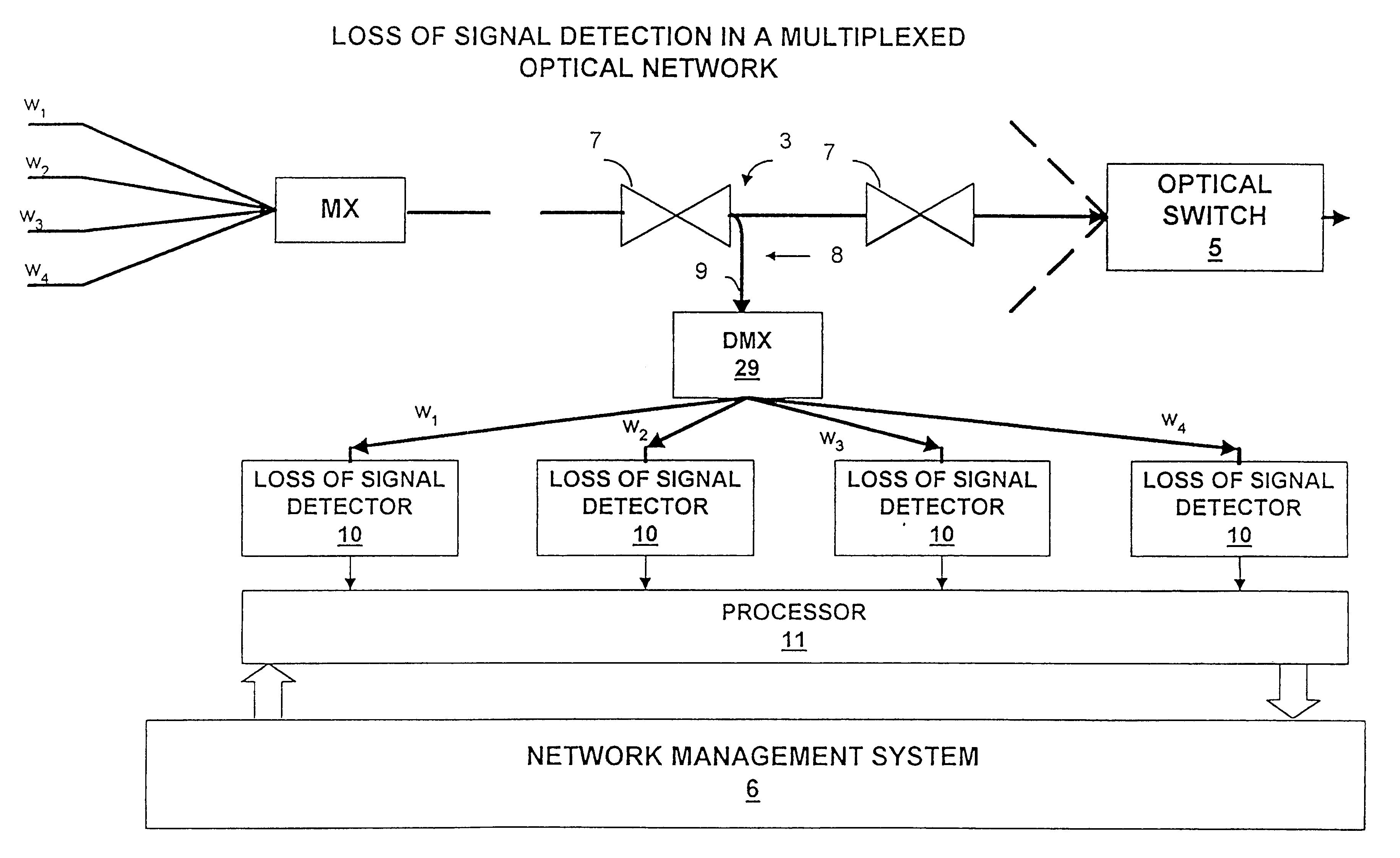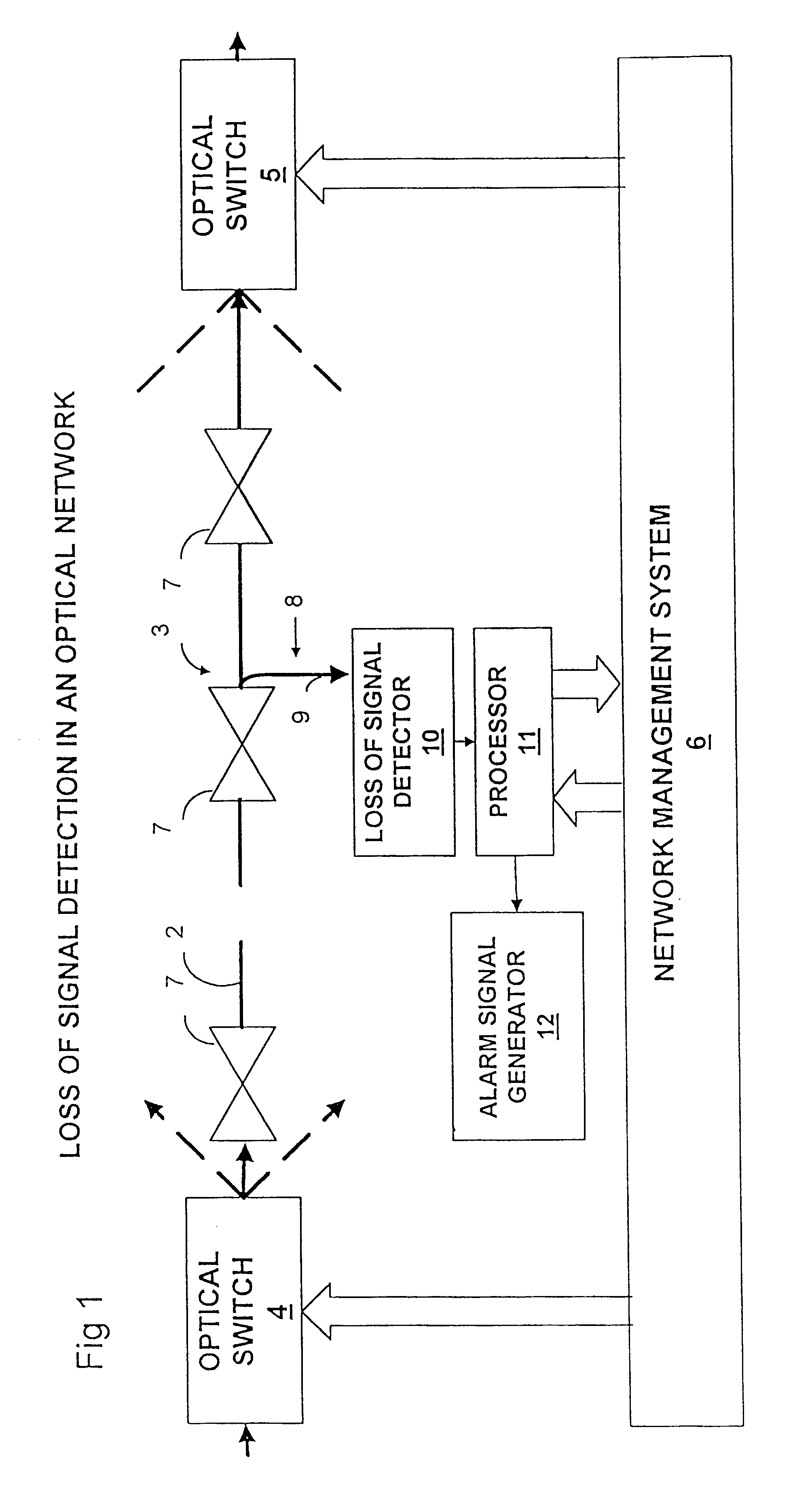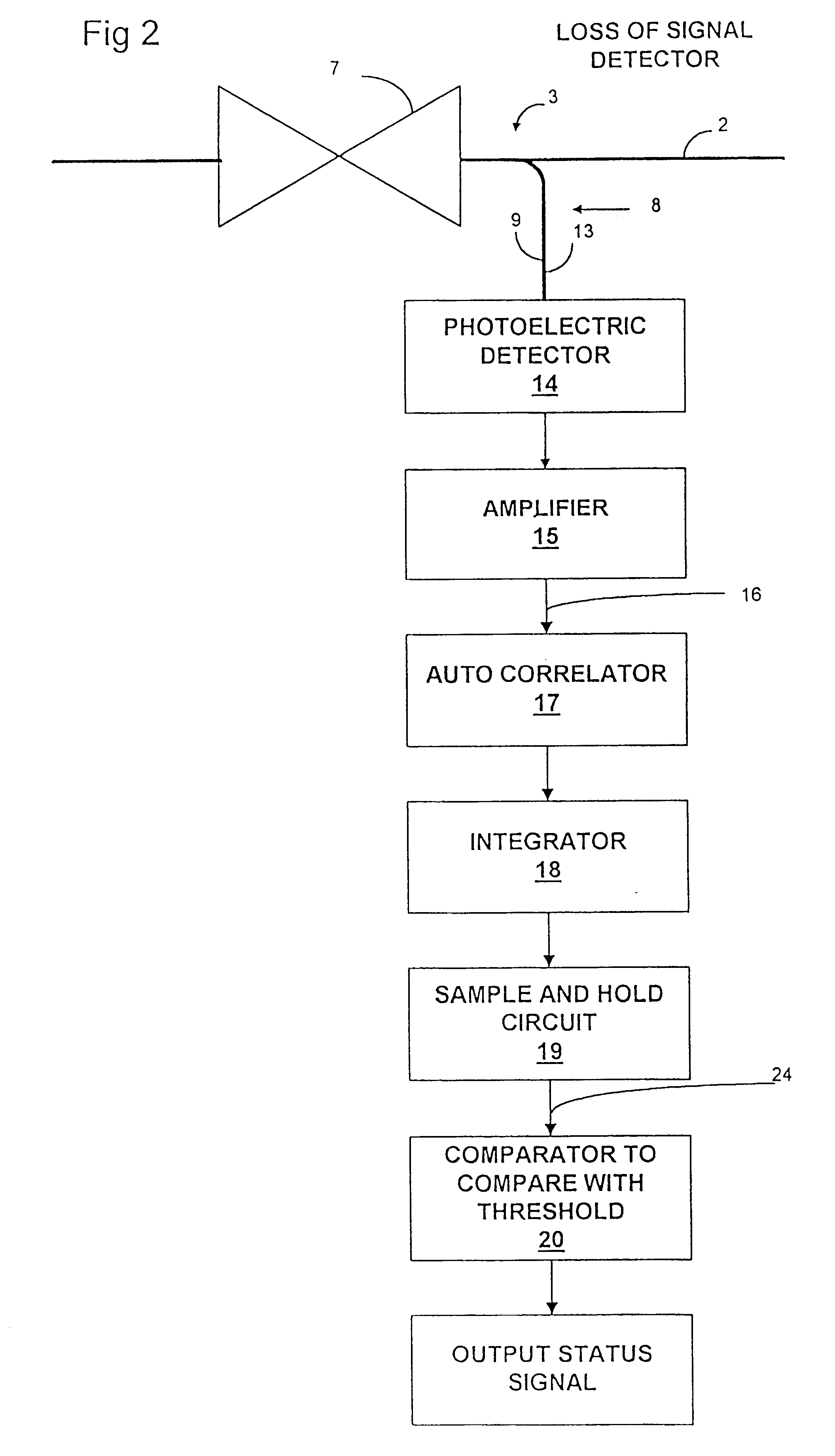Optical network loss-of-signal detection
a technology of optical network and loss of signal, applied in the field of optical network loss of signal detection, can solve the problems of channel power being an unreliable indicator, signal loss may be detected, use of such dither or other forms of tracing signatures may not be acceptable in a highly complex network accessed by many users
- Summary
- Abstract
- Description
- Claims
- Application Information
AI Technical Summary
Benefits of technology
Problems solved by technology
Method used
Image
Examples
second embodiment
A second embodiment will now be described with reference to FIG. 10 using corresponding reference numerals to those of preceding figures where appropriate for corresponding elements.
The loss of signal detector of FIG. 10 comprises an optical tap 8 deriving an optical tap signal 9 from a data signal carrying waveguide 2. Photoelectric detector 14 produces an electrical signal output which is amplified by a transimpedence amplifier 15 having a bandwidth 10 MHz. This bandwidth is considerably less than the bandwidth required to fully detect the signal since the bit rate frequency will typically be of the order of several GHz.
The amplifier 15 outputs a monitor signal 16 which is input to a band pass filter 40 and, in parallel, is also input to a low pass filter 41. The band pass filter 40 outputs a band pass filtered signal 42 which is filtered with lower and upper cut off frequencies of f.sub.1 and f.sub.2 respectively, f.sub.1 being selected to be above DC(zero frequency) and f.sub.2 ...
first embodiment
the present invention described above with reference to FIGS. 1 to 9 is concerned with a synchronous communications system in which an auto-correlator is used to detect a periodically occurring feature of the digitally coded data stream in the form of a series of bits forming framing bytes, as defined by the synchronization protocol.
Typically there may be other features of periodically recurring bit structures such as pointers to specific data areas within frames so that, where such further features are present, pronounced peaks in the power spectral density may occur at harmonics of the frame rate frequency.
It may therefore in some cases be preferable to carry out correlation at one of these harmonics of the frame rate frequency.
The loss of signal detector of the second embodiment described above with reference to FIG. 10 processes the monitor signal such that the characteristic measured is representative of the power of the optical signal in the defined bandwidth normalized relati...
PUM
 Login to View More
Login to View More Abstract
Description
Claims
Application Information
 Login to View More
Login to View More - R&D
- Intellectual Property
- Life Sciences
- Materials
- Tech Scout
- Unparalleled Data Quality
- Higher Quality Content
- 60% Fewer Hallucinations
Browse by: Latest US Patents, China's latest patents, Technical Efficacy Thesaurus, Application Domain, Technology Topic, Popular Technical Reports.
© 2025 PatSnap. All rights reserved.Legal|Privacy policy|Modern Slavery Act Transparency Statement|Sitemap|About US| Contact US: help@patsnap.com



